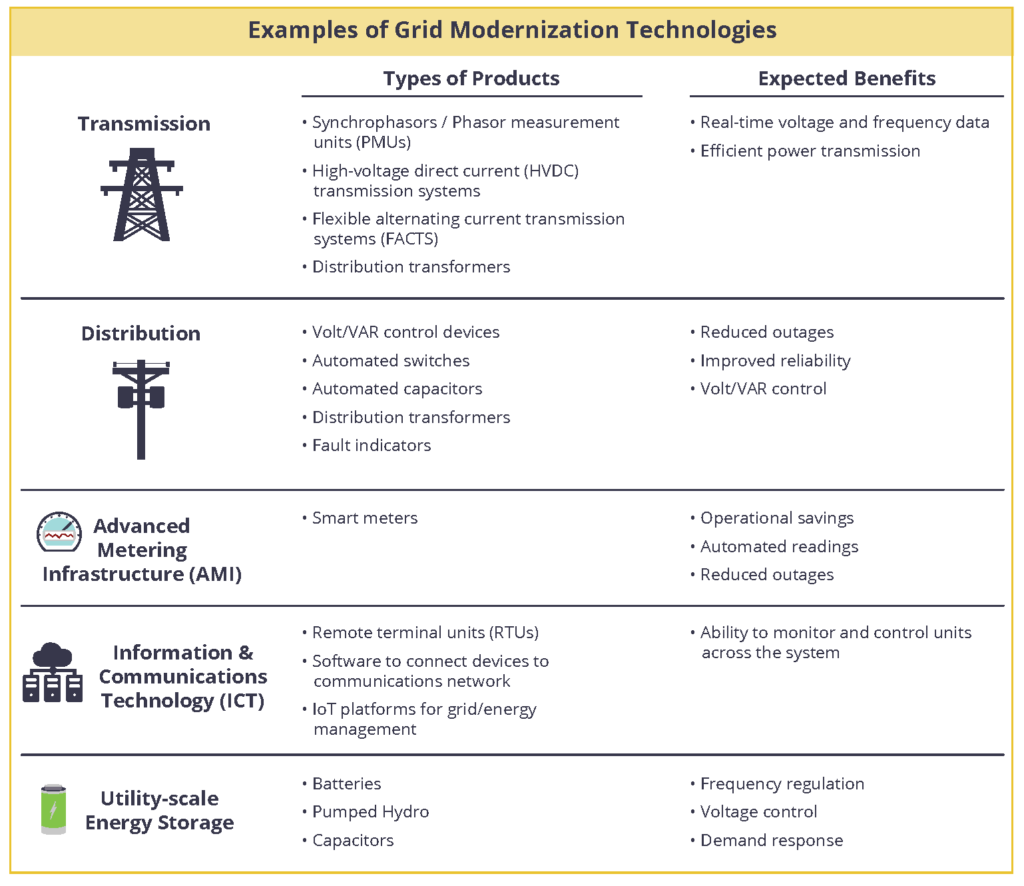What is Grid Modernization?
The legacy power grid is the centerpiece of the U.S. energy economy, delivering critical electricity from generators to consumers. However, new challenges and priorities are driving major changes to the current electricity system. There is increasing stress on the grid due to rising deployment of renewable energy and distributed generation, increased customer participation in electricity markets, environmental and greenhouse gas reduction goals, the need for resilience to weather events and natural disasters, aging infrastructure, and mounting concerns around vulnerability to cyber and physical attacks. These trends signal changing economic, environmental, security, and consumer priorities, and, consequently, an urgent need for grid modernization.
The nation’s legacy grid, managed historically with very little real-time data, was built with strategies to keep power flowing safely: overcapacity through intermediate and peaking plants, large reserve fossil power generators, one-way flow of electricity, and human operator decision-making. Some of these key characteristics of the legacy grid will need to evolve. Large-scale fossil fuel generation is not compatible with long-term greenhouse gas reduction goals. Distribution systems are now seeing unprecedented two-way flow due to new technologies designed to manage end uses, and operational control and analysis will need to be adapted to this bidirectional flow. Furthermore, human operator decision-making will need to be accelerated and further supported to manage load and numerous capacity assets, such as renewables.
To rapidly modernize the grid to meet today’s pressing needs, innovation, collaboration, and leadership are required to accelerate technological, regulatory, market, and business model transformations. These grid modernization efforts are built upon a vision for the future that presents a reliable, resilient, secure, sustainable, and adaptive grid that remains affordable for consumers.

Grid modernization employs numerous technologies, on both the utility- and consumer-side, to achieve these outcomes. For example, renewable energy, battery storage, energy efficiency technologies, and integrated resources, such as building energy management systems and microgrids, are transforming the traditional generation, transmission, and distribution network with distributed generation and flexible and reliable energy supply. Sweeping advances in price-to-performance have occurred over the past decade in many individual technology areas, thanks to unrelenting progress in advanced materials, advanced manufacturing, and information technology.
There is also an emerging, dynamic layer to the power grid: The Internet of Things (IoT). The IoT is a wireless, internet-enabled network of sensors, devices, and software that can facilitate robust data collection and analytics, digital control and automation, and telecommunications. These “smart” technologies include advanced metering infrastructure, phasor measurement units, voltage regulation equipment, power flow controllers, and equipment health sensors. Physical generation, transmission, and distribution assets are also embedded in the IoT, including feeder switches, substations, and transformers. Because of two-way digital communication, information gathered by IoT assets can flow in multiple directions to empower both grid system operators and consumers. Enhanced communications through seamless interoperability of IoT components—allowing not only the exchange of information but also its use—can create active and reactive systems that quickly adapt to grid conditions.

Job Opportunities in Grid Modernization
- Systems software developer
- Information security analyst
- Computer network architect
- Electrical and electronics engineer
- Engineering technician
- Electrical power-line installers and repairer
- Electrician
- Power distributor and dispatcher
- Power plant operator
- Industrial production manager